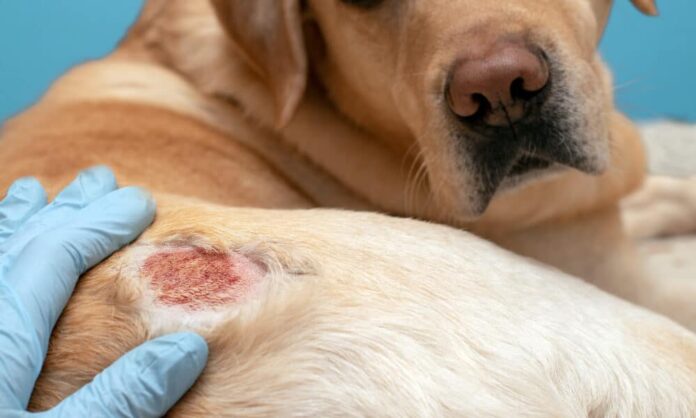Understanding Common Dog Skin Conditions: Symptoms, Breeds at Risk, and Effective Treatments
Frequent scratching and licking can be bothersome for pet owners, but these behaviors often signify significant discomfort for your canine companion. Dog skin conditions are prevalent and rank among the American Veterinary Medical Association’s (AVMA) primary health concerns for canines.
This article explores six common dog skin conditions, detailing their symptoms, breeds most at risk, and the treatments available. Early identification and proper care can lead to better health and comfort for your pet.
Signs and Symptoms of Skin Problems in Dogs

Frequent itching and licking are among the most apparent signs of skin issues. However, other symptoms may vary depending on the specific condition:
- Inflammation
- Red or discolored skin
- Hair loss or bald patches
- Rashes or bumps
- Scabs
- Dry, flaky skin
- Scaly skin patches
- Hot spots
6 of the Most Common Dog Skin Conditions
1. Skin Allergies
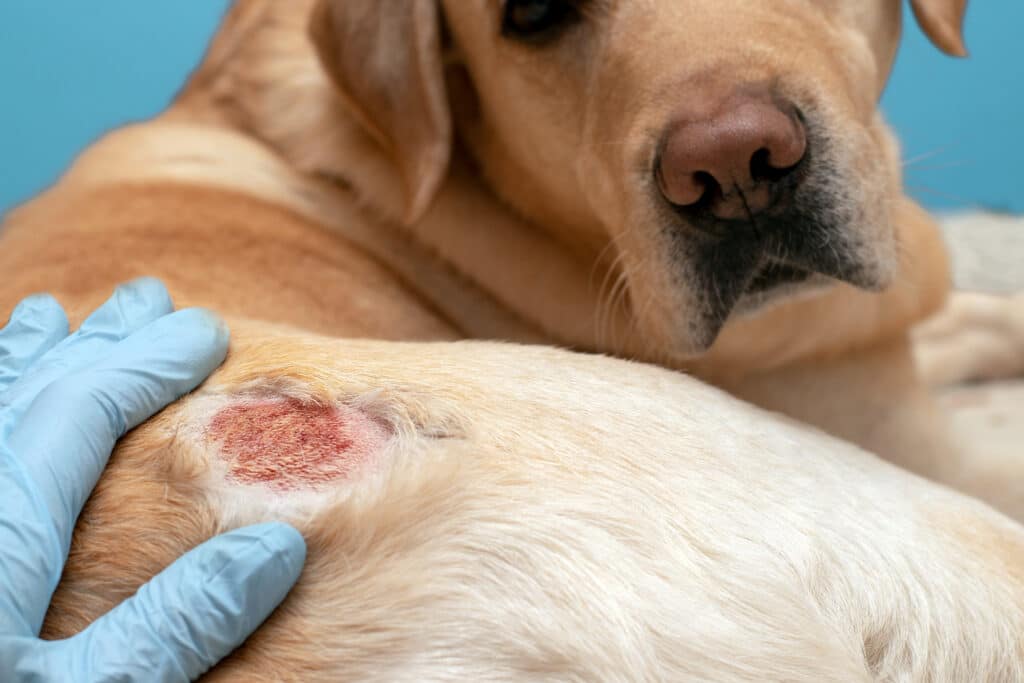
Skin allergies, or canine atopic dermatitis, typically appear on a dog’s feet, ears, and belly, and result in red, itchy skin. Environmental factors, like pollen or certain foods (e.g., beef, eggs, and dairy), can trigger these allergies.
Breeds Most Prone to Skin Allergies:
- Shih Tzu
- Golden Retriever
- Scottish Terrier
- Labrador Retriever
- Boxer
- Boston Terrier
- Dalmatian
Skin Allergy Treatment
While no permanent cure exists for skin allergies, there are ways to alleviate symptoms:
- Identify allergens: Elimination or allergy testing can pinpoint triggers.
- Reduce exposure: Limit contact with identified allergens.
- Medication: Consult your vet about appropriate prescriptions.
- Use mild shampoos: Hypoallergenic shampoos can help maintain skin health.
2. Fleas and Ticks
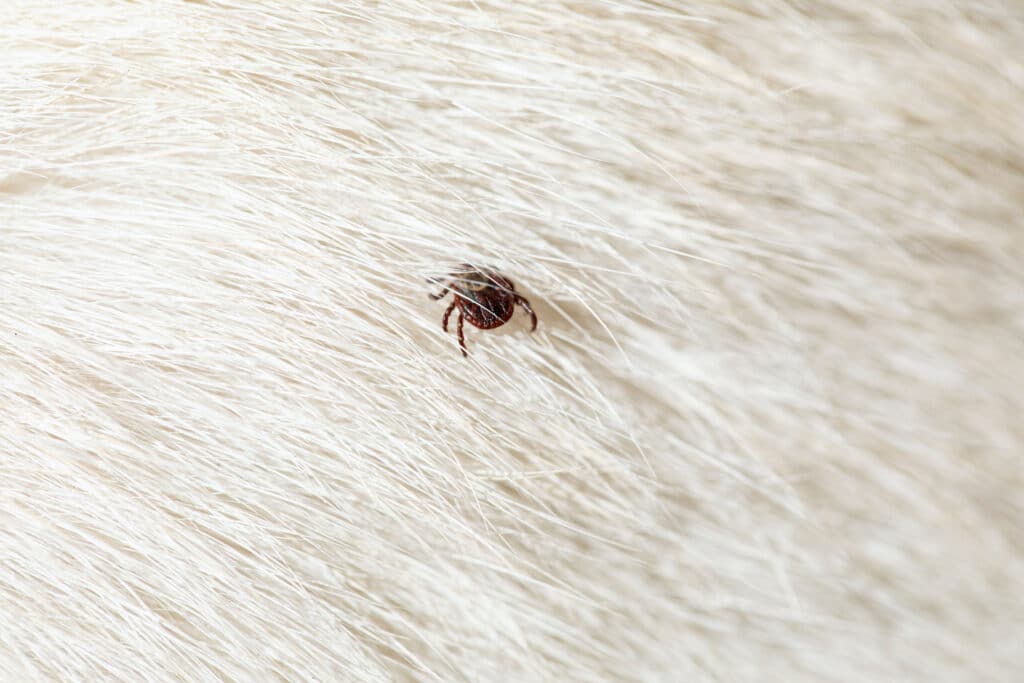
Fleas and ticks are external parasites that cause excessive itching and can lead to serious health issues. Fleas can cause hot spots and severe blood loss, while ticks can transmit diseases such as Lyme disease.
Breeds Most Prone to Fleas and Ticks
While any dog can contract fleas and ticks, long-haired breeds are often more susceptible. Additionally, gundog, terrier, and pastoral breeds may experience higher tick infestation rates.
Fleas and Ticks Treatment
Here are common solutions for managing fleas and ticks:
- Clean your home thoroughly: Regular cleaning helps eliminate eggs and larvae.
- Keep your dog indoors during flea seasons: Limiting outdoor access during peak seasons can help.
- Medication: Consult your veterinarian for effective treatments like Bravecto and NexGard.
3. Folliculitis
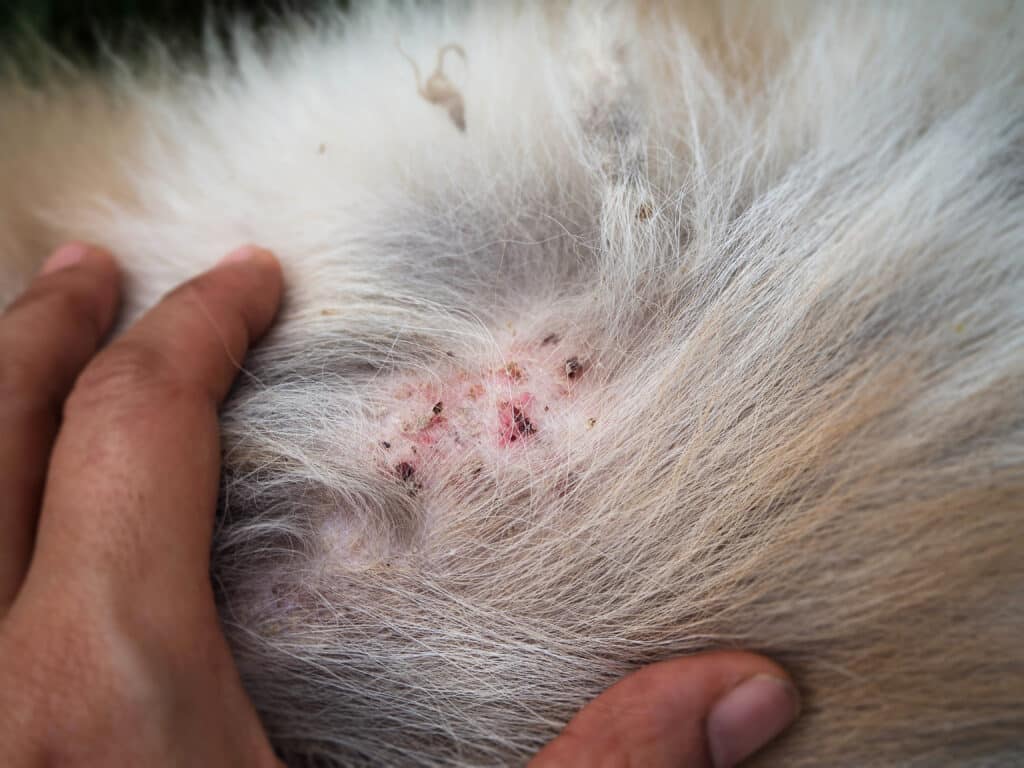
Folliculitis occurs when hair follicles become inflamed, usually due to a bacterial infection. Symptoms include bumps, sores, and scabs.
Breeds Most Prone to Folliculitis
While no specific breed is predisposed to folliculitis, dogs with existing skin conditions are more likely to develop it.
Folliculitis Treatment
Effective treatments may involve:
- Topical therapy: Use antibacterial shampoos and creams.
- Oral medication: Antibiotics may be needed for severe cases.
- Treat underlying issues: Address any concurrent skin conditions.
4. Ringworm
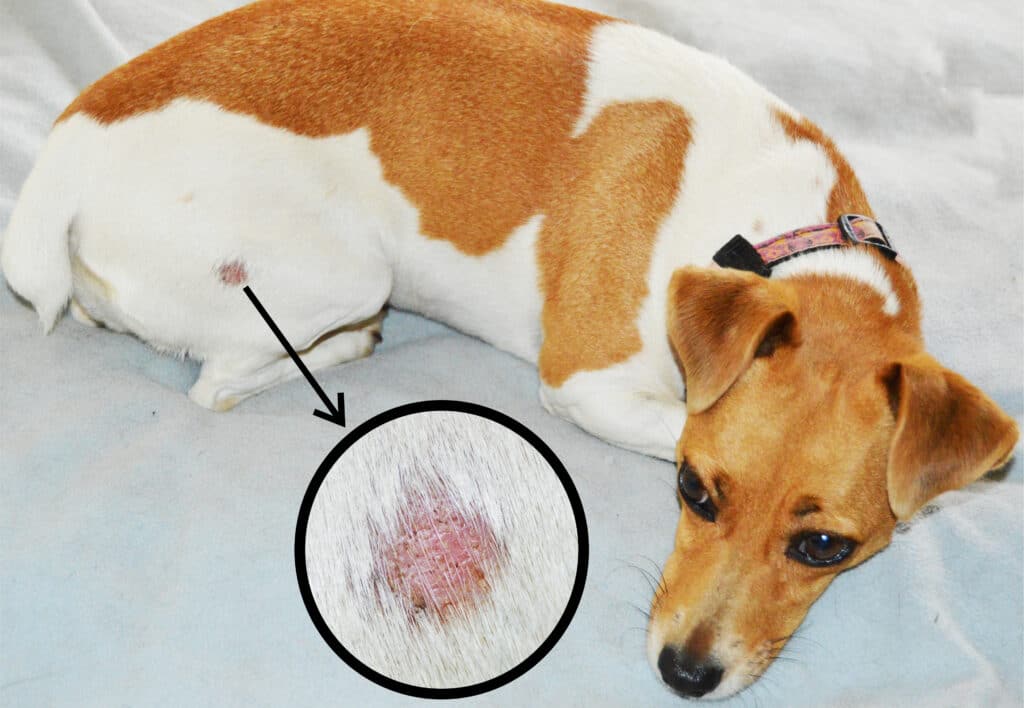
Despite its name, ringworm is a fungal infection that manifests as red, circular patches on the skin, often confined to a single area. Ringworm is contagious and can affect other pets and humans.
Breeds Most Prone to Ringworm
- Boston Terrier
- Yorkshire Terrier
- Russell Terrier
Ringworm Treatment
To treat ringworm:
- Quarantine your dog: Limit contact with other pets and people.
- Seek veterinary advice: Discuss oral medications specific to ringworm.
- Utilize topical creams: Combining treatments is often most effective.
5. Mange
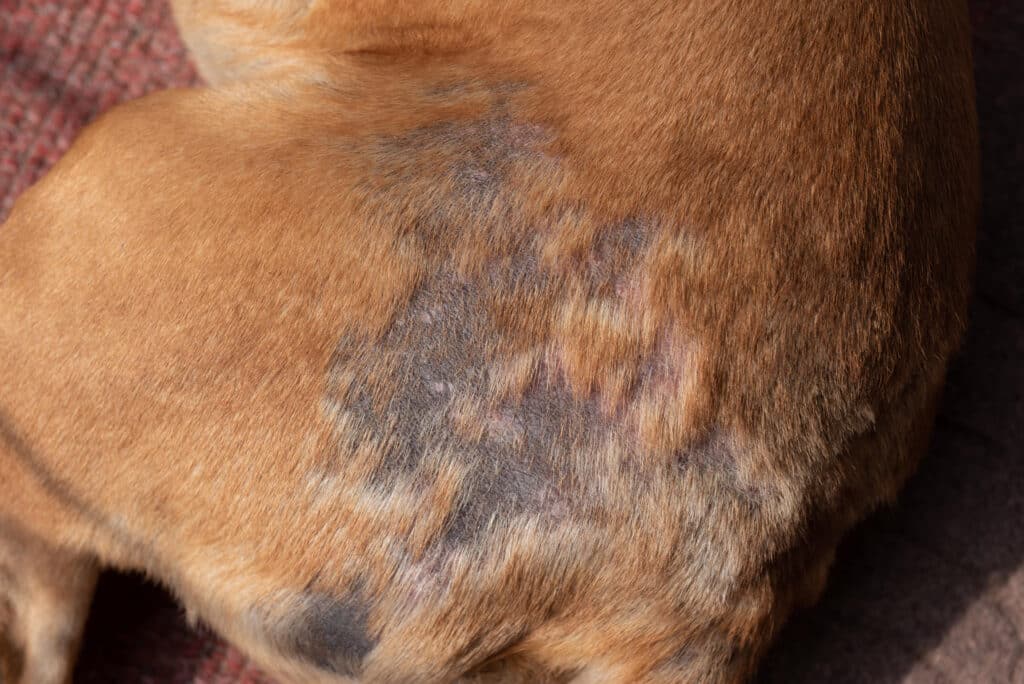
Mange is caused by mites and can lead to severe itching and hair loss. There are two types: demodectic and sarcoptic, with the latter being highly contagious.
Breeds Most Prone to Mange
- Dalmatian
- American Bulldog
- American Pit Bull Terrier
- Old English Sheepdog
- Shar Pei
Mange Treatment
Treatment for mange can include:
- Topical medication: Use veterinary-recommended treatments.
- Oral medication: Vets may prescribe medications based on severity.
- Dips: Though less common now, they are used in severe cases.
6. Pyoderma
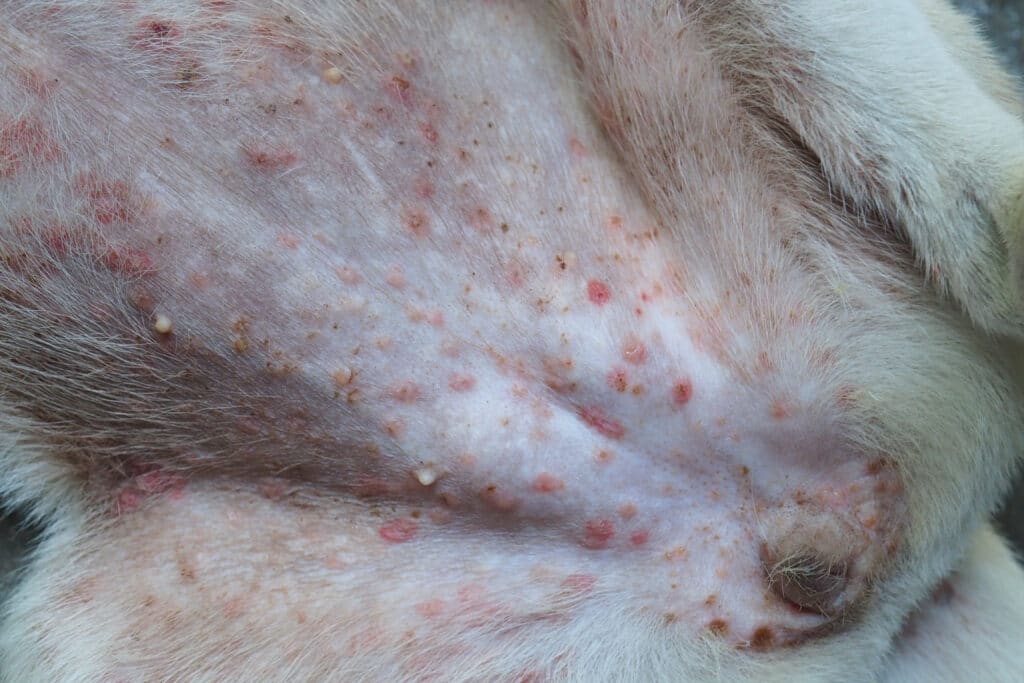
Pyoderma is a bacterial skin infection characterized by raised, red pus-filled blisters. It is more common in puppies but can occur in any dog.
Breeds Most Prone to Pyoderma
- Staffordshire Bull Terrier
- Bulldog
- Boxer
- Shar-Pei
Pyoderma Treatment
Typical management includes:
- Topical therapy: Creams or sprays are effective for mild cases.
- Antibiotic therapy: Oral antibiotics often prescribed for three to four weeks.
- Treating underlying issues: Address any concurrent health conditions.
Conclusion
Maintaining your dog’s skin and coat health is essential. If you notice any symptoms of the skin conditions discussed, consult your veterinarian promptly. Early intervention can prevent discomfort and safeguard your dog’s overall well-being.


